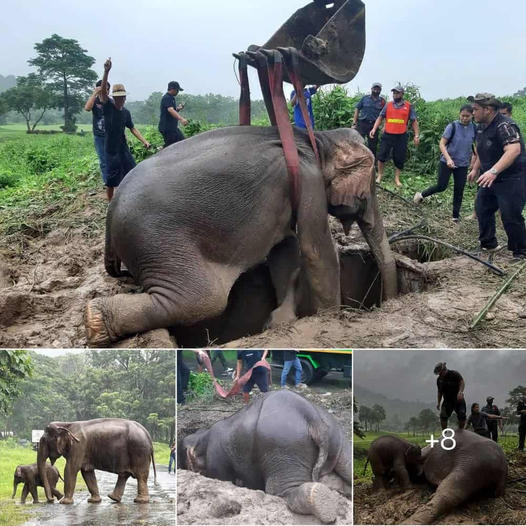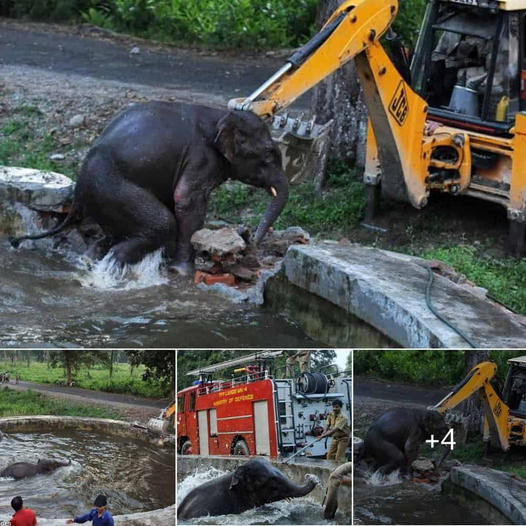For the wildlife conservation team in this remote corner of the African savanna, facing down a fully-grown, distressed elephant trapped in thick, unyielding mud has become a frustratingly common occurrence in recent weeks. In fact, it’s a scenario they’ve now confronted not once, not twice, but three times over the past 21 days – a testament to the urgent, unforgiving challenges of protecting these majestic giants in the face of a rapidly changing, increasingly dangerous environment.

“It’s heartbreaking, really,” lamented field operations manager Sarah Hendricks, her voice tinged with a mixture of exhaustion and determination. “These animals are so intelligent, so emotionally complex. You can see the fear and the panic in their eyes as they struggle to free themselves. And knowing that we have the ability to help, but also the very real risk of injury or even death if we approach them incorrectly – it’s an impossible situation.”
The team’s most recent encounter unfolded just yesterday, when a routine aerial survey spotted a fully-grown male elephant mired deep in a treacherous mud trap, his massive frame sinking deeper with each frantic, futile effort to escape. Mobilizing their most experienced personnel and specialized rescue equipment, the conservation crew raced against the clock to reach the distressed animal before it succumbed to dehydration or exhaustion.

“We knew we had to act fast,” Hendricks recalled. “These mud pits can be absolute death traps, and the longer an elephant stays trapped, the slimmer their chances of survival. Our team has trained extensively for situations like this, but that doesn’t make it any less nerve-wracking when you’re actually out there, facing down a 6-ton animal that’s scared out of its mind.”
With the elephant’s trunk barely visible above the thick, soupy mud, the rescuers carefully approached, taking great pains to avoid startling the already-panicked creature. After carefully assessing the situation, they set to work, employing a meticulously choreographed plan to dig trenches, lay down plywood, and gradually coax the elephant back to solid ground.

“It’s an intensely delicate process,” Hendricks explained. “You have to be so careful not to inadvertently cause the animal further distress or injury. One wrong move, and you could end up with a real disaster on your hands.”+

Miraculously, after several hours of painstaking work, the team successfully freed the elephant, watching with bated breath as the majestic creature regained its footing and lumbered off to rejoin its herd, seemingly no worse for wear.

“It’s such a relief when we can pull one of these rescues off,” Hendricks said, a weary smile crossing her face. “But the fact that we’re having to do it again and again, in such a short span of time – it’s a sobering reminder of just how fragile the situation is for these animals. The threats they face, both from environmental degradation and human encroachment, are relentless.”

As the conservation team prepares to face down this challenge yet again, Hendricks and her colleagues remain undaunted, driven by an unwavering commitment to safeguarding the elephants’ future. But the frequency of these mud trap incidents has them deeply concernedaout the long-term viability of the herd.
“We’ll keep doing whatever it takes to protect these animals,” Hendricks vowed. “But at a certain point, we have to start looking at the bigger picture and asking how we can prevent these kinds of crises from happening in the first place. The stakes are too high to keep playing catch-up.”




